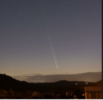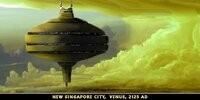- Oct 1, 2014
- 6,279
- 13,501
- AFL Club
- Hawthorn
The Southern Sky Astrophotography exhibition for 2024 has been decided. If you live in sin city you can see the winners in the flesh at the Sydney observatory until 1 February. There are some real beauts.

 www.theguardian.com
www.theguardian.com
Unfortunately the Guardian doesn't mention how they were taken, which I find very annoying with any photography competition, even more so with Astrophotography.

Galaxies, auroras and a cosmic bat: Southern Sky astrophotography exhibition 2024 – in pictures
The Southern Sky Astrophotography 2024 exhibition displays the top entries from the 20th David Malin awards for Australian astronomers and photographers. The images are on display at the Sydney observatory until 1 February
Unfortunately the Guardian doesn't mention how they were taken, which I find very annoying with any photography competition, even more so with Astrophotography.











 on Venus.
on Venus.




